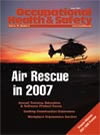
June 2007
- Air Rescue in 2007
- Curbing Construction Explosions
- Surfing the Internet for MSDSs
- Do You Need a Safety Management System?
Click here to subscribe.
Cover Story

By Ronnie Rittenberry
JOHN Sidler, 19, was driving to work in Dallas on a rainy Saturday morning in October 2005 when his truck hydroplaned and smashed into a utility pole, crushing his vehicle and knocking him unconscious. Good Samaritans who witnessed the accident rushed to his aid and called 911.
Features
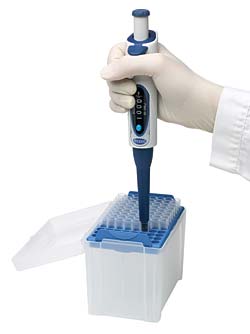
By Joan G. Erickson, Anthony V. Smith
PIPETTE selection is seldom a well-thought-out decision. Rather, it has more to do with the individual preference of the person responsible for ordering or the right salesperson's being there at the right time with the lowest price. However, pipette selection is becoming more critical due to the high cost of work-related injuries and the impact the absence of a scientist can have on a research project.
By Shel Segal
Without wearing the necessary protective equipment, more injuries and fatalities will occur on the job. This is something Jerry Bach, vice president of Sacramento, Calif.-based Safety Center, Inc., will not tolerate. Wearing personal protective equipment is not only common sense that will keep you alive and safe, it also cuts down on worker's compensation claims, insurance premiums, and personal injury lawsuits for which employers must pay the price.
By Keith House
OUR hands are two the most valuable and widely used tools in the workplace. Proper glove selection is essential in protecting these tools from on-the-job hazards. All too often, workers are faced with a very limited understanding of why hand protection is needed or even how to select a glove properly for their application. The wrong glove often is selected for the job task, which risks injury to the worker or a loss in productivity.
By Patricia Childers
YOU'VE seen the success of safety incentive programs, and you know how to run an incentive program. But your results are never quite what you expected.
Maybe it isn't just the program. In 2004, a company I'll call CVC Industries (a fictional name representing a combination of many companies involved in incentive safety programs) invested considerable time and energy in developing a safety incentive program to improve driver safety. Although initial results were good, driver participation fell off quickly and the program ended without a whimper. What went wrong?

By Ron Bruce
MORE than ever, construction companies are under pressure to provide both employees and subcontractors with effective safety training. OSHA and many states mandate safety training for employees, and recent laws such as California’s AB 1127 hold contractors responsible for the safety of on-site subcontractors. Adding to the incentive to provide safety training for workers is the realization by most companies that helping to ensure employee safety is simply good business.
By Mark H. Stromme
IN 1994, OSHA made a big change in how it inspects construction job sites. Previously, construction inspections were comprehensive in scope, addressing all areas of the workplace and, by inference, all classes of hazards. This may have forced compliance officers to spend too much time and effort focusing on a few projects looking for all violations--and too little time overall on many projects inspecting for the hazards most likely to cause fatalities and serious injuries to workers.
By Anita J. Hall
THE term "incentives" has been floating around in the business world for decades now, yet the prevalent and effective use of them still continues to trail behind what is not just a trend, but rather a necessity in today's economic environment. Although there are a variety of applications for incentive programs (which include loyalty, reward, and promotional programs), perhaps the more underutilized applications fall into the categories of recognition and performance improvement geared toward sales and non-sales employees.
By Dr. Michael McCann, Mary Watters
THE explosion at BP's Texas City, Texas, refinery that killed 15 contract construction workers and injured 170 other workers in March 2005 is still reverberating. A lawsuit, an investigation by the Chemical Safety and Hazard Investigation Board (CSB), a glossy safety report from BP (along with $1.6 billion set aside for claims), and a bill in the Texas Legislature to mandate a state occupational safety and health plan were the first wave.
By Jonathan A. Jacobi
HERE'S the situation:
Business is tough in today's global marketplace. Everyone is being asked to do more with less. Not just a trend, this seems to be the way of the future.
Safety and risk management professionals have not been insulated from the need to become more efficient. If you are in the safety and risk management field, surely you must agree this is the case.
By Todd A. Brehe
MANAGING workplace safety is an important goal that many corporations have recognized as a logical and effective way to provide a better working environment for employees and to cut corporate costs. A key component in safety management is the software system used to record, manage, and analyze safety-related data. With an effective system, the safety team can see exactly where accidents and unsafe situations are occurring and take proactive steps to eliminate them.
By Glenn D. Trout
THIRTY-two million workers (roughly 10 percent of our population) are potentially exposed to an estimated 650,000 hazardous chemical products each day in more than 3 million American workplaces, according to recent OSHA statistics. Having a solid safety program helps keep your employees from being a statistic. Safety is a major concern in most businesses across the country, and
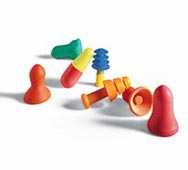
By Brad Witt
FOR decades, studies in the workplace have shown hearing protectors to be underperformers: Real-world attenuation (noise blocking) is less than the published Noise Reduction Rating (NRR) for many workers. Studies like these have spawned a variety of de-rating schemes for hearing protectors that are often misunderstood or misapplied, such as the 50 percent OSHA de-rating or the NIOSH 75/50/30 percent de-rating for ear muffs, formable ear plugs, and pre-molded ear plugs, respectively.
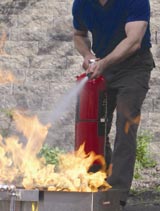
By Simon Balint, Ryan O'Donnell
AS many are well aware, OSHA requires that employees be educated in the use of fire extinguishers every year. Specifically, OSHA 29 CFR 1910.157(g) states: "Where the employer has provided portable fire extinguishers for employee use in the workplace, the employer shall also provide an educational program to familiarize employees with the general principles of fire extinguisher use and the hazards involved with incipient stage fire fighting."
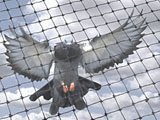
By Cory Gellerstedt
HOW do people get the avian flu? Avian influenza viruses circulate among birds worldwide. Susceptible birds can become infected with avian influenza virus when they have contact with contaminated nasal, respiratory, or fecal material from infected birds. They then shed the virus in their saliva, nasal secretions, and feces.
By Duane Smith
AS dangerous jobs go, the world of working with electricity might not seem the most romantic. Unlike firefighting or law enforcement, electricians are not often featured in blockbuster movies as heroic, brave saviors of the street. But working with electricity can be comparatively dangerous, and the injury rate for electricians is high.
By Joanna Lipper
DURING the past half century, technology has improved virtually every aspect of human life. However, during this period, not much has changed in the world of personal protective equipment. For hearing safety, workers may choose either ear plugs that are inserted into the ear or ear muffs that cover the ears.

By Pano Koukopoulos, CET, CHMM
OH, no—health and safety training again?! In every industry, this is a common response to the announcement of an upcoming session. People absolutely despise safety training because it is the same old, dull, boring, and repetitive material, year after year.
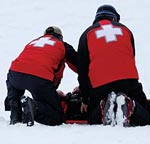
By Arthur Levy
ACCORDING to the American Heart Association, more than one in three American adults have one or more types of cardiovascular disease. The National Heart, Lung, and Blood Institute’s Framingham Heart Study has followed participants since 1948 and their offspring since 1971. The study estimates the overall lifetime risk of cardiovascular disease (CVD) and found more than half of men and nearly 40 percent of women in the United States will develop CVD during their lifetime.
Departments
By Robert Pater
I recently heard a manager delightedly speak about the "miraculous" changes he saw in his company's Safety performance and culture.
By Matt Forck, ASP, JLW
BEING good in safety is not enough. After all, the race for top decile or "world class" safety performance seems every bit as intense as was the chase to break Roger Maris' 1961 home run record. Today, CEOs are setting single-year injury goals that reduce last year's numbers by 75 percent or more.
By Marc Barrera
PEOPLE aren't perfect and are sometimes prone to making errors; it's the reason why pencils have erasers and keyboards have a backspace key. Of course, one can never completely remove all chance of error, but actions can be taken to minimize its occurrence.
By Waldo Waldman
No fighter pilot ever flies a combat mission solo. We always fly as a team--with our wingmen, who provide mutual support and maximize our ability to accomplish our objectives.
By Jerry Laws
LET'S say you notice a safety-related problem early enough to prevent real harm. And you address it scientifically, analyzing it as no one else has, then share your results with not only the industry you’ve set out to aid, but also others who are having the same problem.